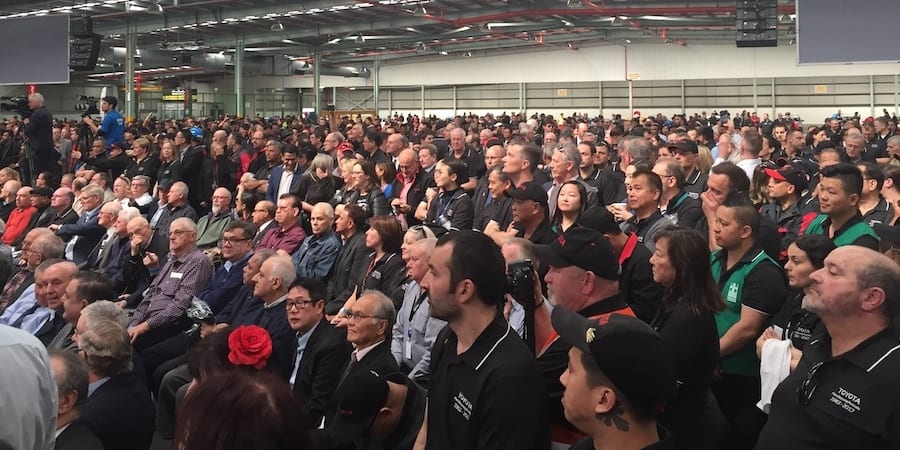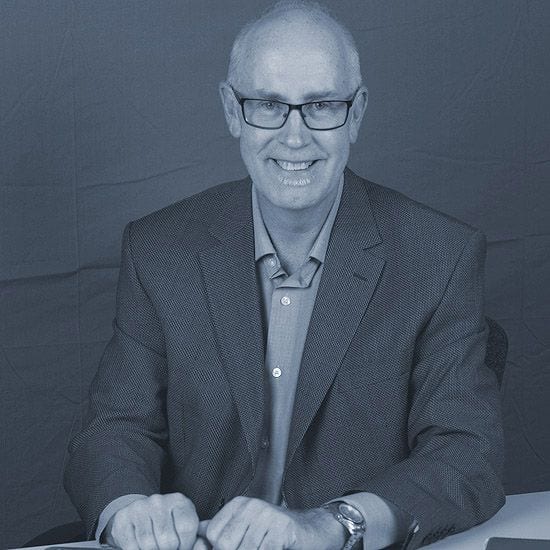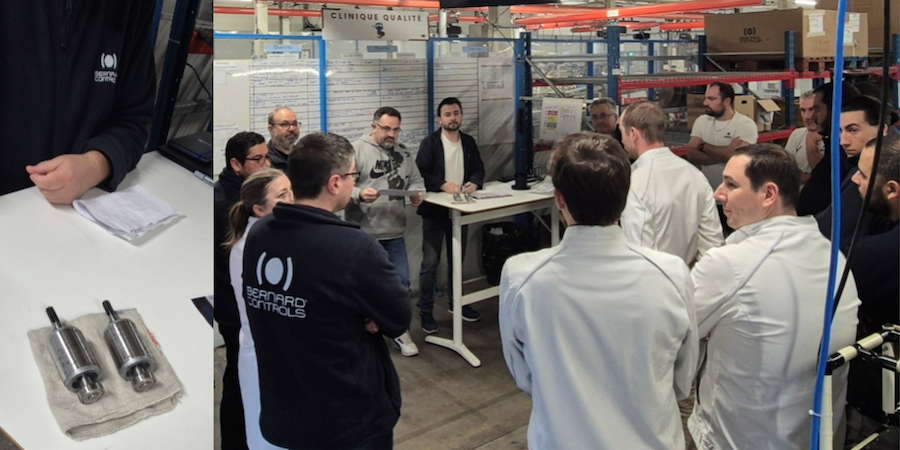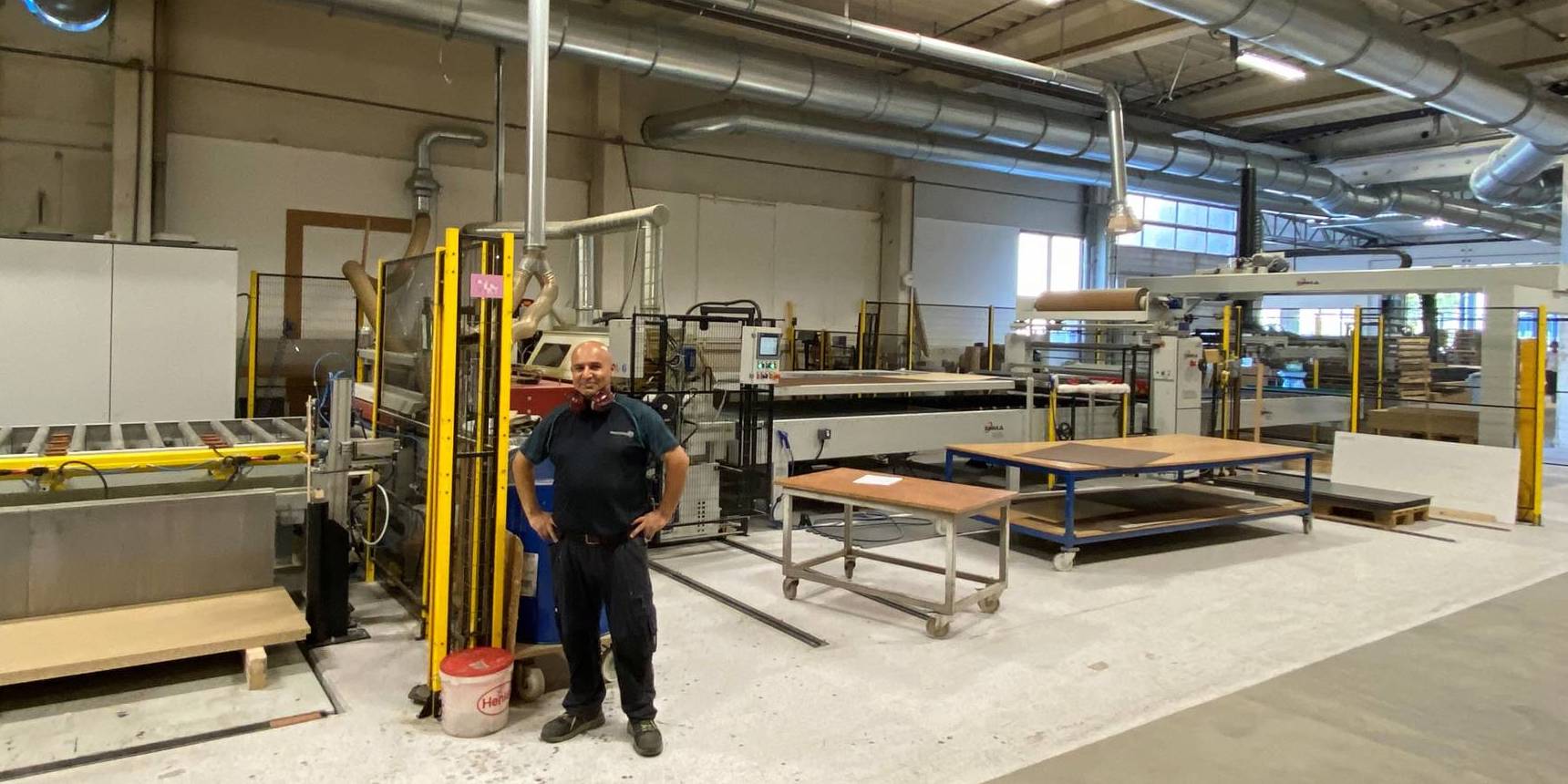
How we secured a future for employees at Toyota Australia
FEATURE – Last year’s shut-down of Toyota’s Altona plant in Australia moved us all. Here, the former Divisional Manager of Manufacturing offers a first-hand account of how the company made the most of a terrible situation.
Words: Doug Rickarby, former Divisional Manager of Manufacturing at Toyota Australia
On February 10th, 2014, the President of Toyota Motor Corporation, Akio Toyoda, flew to Melbourne to make an important announcement. His visit to the Altona plant, however, was different from others visits, in that only a handful of people knew about it. I myself, at the time a Divisional Manager, was told about the visit – and the reason behind it – a mere three weeks prior.
The combined shift meeting was held in the late afternoon and with the entire workforce gathered in the Assembly shop area expecting a regular senior management address. At around 4:00pm, Max Yasuda, who was President of Toyota Australia at the time (he went on to be Chairman, and has now returned to TMC Japan), walked on the stage and delivered a shocking message: the company had decided to close the Altona site, ceasing all of its manufacturing activities in Australia. Immediately after Mr Yasuda finished talking, Akio Toyoda took to the stage and gave a very heart-felt speech, in which he told people how Toyota was committed to safeguarding the future of its people.
To many, the shutting down of manufacturing operations had seemed inevitable for quite some time: high cost base, a high degree of diversification in the relatively small Australian domestic market, only Toyota with significant export markets and one OEM after another deciding to leave the country had left Toyota under unprecedented pressure to go it alone, making it increasingly difficult for the automotive industry to survive Down Under.
In 1994, Toyota was confident enough in the future of its Australian business that it opened a new Assembly Plant in Altona, a suburb of Melbourne, accepting the Government’s plan to build a viable volume base through exports. A decade later, however, the business was struggling: competitiveness is only possible with a viable local supply base, but as Mitsubishi pulled out and volumes at remaining car manufacturers reduced, the pressure started to mount.
The morning of the announcement, at our Senior Management Meeting, we weren’t sure what to expect. Would people heckle Mr Toyoda? Would they boo him off the stage? I was proud to see that, despite the obvious shock and disappointment, both Mr Yasuda and Mr Toyoda received a round of applause. Evidently, people knew they had been shown respect: the news of the shut-down hadn’t come from the rumor mill or the media, but from the Global President of the Corporation, who flew for 10 hours just to deliver it in person. Our communication philosophy had always been that, no matter what news, people would always hear it first from us. More importantly, the closure had been announced almost four years in advance and the company had made a commitment to help people figure out their next steps.
This represented a strong base we could work from in the complicated days ahead.
MAKING IT HAPPEN
Management’s priority following the announcement was to give people income and job security, despite the difficult situation. In turn, this would allow Toyota to produce the volumes it had set for itself, thus being able to continue serving its customers and retain its suppliers.
Many thought we’d end up closing one shift, or that workers would start leaving in droves. None of that happened – there were difficulties, of course, but in general we faired pretty well. We committed to an average minimum volume of 90,000 cars, eventually producing more than that on each of the three years leading up to the closure. This reassured our suppliers and convinced most of them to stick around.
Despite mass disappointment at the news, the great track record of Altona and what I think was a successful “transition plan” meant that, as a plant, we had an increased resolve to keep motivation up in the four years leading up to the closure. The Toyota philosophy informed every step of the process. To the pillars of Respect for People and Continuous Improvement we added ‘Heartfelt Leadership’ In other words, we engaged in continuous improvement in every aspect of our operations right up to the very end, still centered on what people needed to prepare for their futures. This is where the idea of “last car, best global car” came from: not only would Altona continue producing, but the last vehicle rolling out of its production line would be the best Toyota car ever made anywhere in the world. This was a strong, empowering, but yet challenging message for our people, and something that helped them to keep their heads up high and remain engaged in problem solving and improvement.
At the same time, we wanted to ensure people would leave Toyota with the best possible CV for themselves, which became a good driver to accelerate the development of their skills as a ticket to a good future. It’s no coincidence we called this program “DRIVE” – which stands for Dedicated, Ready, Individual, Vocational and Energized.
The DRIVE program formed part of the package of the negotiation with the Union on redundancy conditions as Toyota pushed strongly the importance of professional development support during the closure period. Despite some just saying “give us the money” our employees ended up voting for the redundancy package including the DRIVE support and commitment to stay to the end. So while some of the young engineers decided to leave, the vast majority of workers signed up to the deal in May 2014. (Contract workers, representing around 10% of our workforce, also received a little incentive to stay and job search support.)
People responded well. If you looked at our KPIs and performance, you could barely pick up the announcement date. In fact, our figures improved! Amazingly, we reached 84% participation in quality circles and 100% project completion. Later on, even the union confirmed the soundness of DRIVE.
SECURING FUTURES
The main objective of DRIVE was to support people in making a new career plan for themselves. Our commitment to them was to cover the cost of courses, which they would need to complete in their own time. The development of capabilities mainly happened through upskilling and reskilling.
With reskilling, we tried to encourage mobility within the business wherever possible. Many of our engineers, for example, became distribution system coordinators, car dealership kaizen experts and marketing people. Of those who left, many changed industry altogether – healthcare being one of the main recipients – and became nurses or patient transport officers. We also had a few surprising career changes, so to speak, including a theater technician and a helicopter pilot.
Our case managers matched people with their interests, skills and experience. Whenever they found a viable path to a job, a career plan was developed and signed off and the case managers ensured people followed it. Training typically took place externally, at universities for example, and by creating a labor pool, we were also able to release those who needed to go through a job placement before starting their new careers.
For the upskilling, we built on our process of externally accredited training by peoples position level, allowing everyone access to study the qualification level above their current position.
Eventually, around 600 people graduated one level higher in the upskilling program, while 60% of the Altona workforce went down the reskilling route. Of the 30% who didn’t participate in either, 17% represented people who were close to retirement, but still attended retirement and financial planning workshops and had been given a redundancy package. By the time we got to closure, we were pretty satisfied with the result so far and with DRIVE to continue to support until the end of June 2018, there was still opportunity for those who needed support past closure.
On the shop floor, whenever I asked people what they would be doing after Toyota, I heard many incredible stories of resilience, great initiative, and optimism. Grief was the overarching feeling after the announcement was made, but because we stuck to people, by the end, the vast majority were feeling positive about their future. They knew that their newly-acquired skills would give them new opportunities.
I remember a Team Member, originally from Croatia, who had always been very quiet and avoided making eye contact with me. We only started to strike small conversations in last year before the closure. The day before the final ceremony, he came up to me and I asked him what he was going to do. “In two weeks I will be moving north of Sydney with my wife to start working as a train driver in Hunter Valley,” he told me. He also explained that he initially didn’t make much of the DRIVE program, but that once he went through the process, he understood how great it was. “This is the best thing that’s ever happened to me. Plus, I love trains!” Seeing that shift in him (and in many others) was quite moving.

IT’S IN OUR CULTURE
Toyota has always strived to provide long term employment [some people say lifetime employment, but Toyota always say long term is their goal, but never a guarantee] going to extraordinary lengths to only build plants that could be viable in the long term. Respect for people really does inform everything the company does: providing the kind of support Altona’s workers received cost quite a lot of money, but in the eyes of management it was important.
During our management reviews on the shop floor (which we never stopped doing), we realized how appreciative people were of what the company was doing for them, and that they understood that the circumstances were beyond our control.
When the end of September came and our last week at Altona began, some very interesting happened. Because we had an objective of zero obsolescence, we had set a pretty conservative production plan for the very end. The last six months had run very smoothly, but we were worried that the last couple of days could be heavily disrupted by parts supply issues – not exactly ending on a high note. But the opposite occurred: people empowered each other to go tackle problems in their areas.
Those last two days, the management team went through the whole site, visiting each department as it finished working – pressing, welding, paint shop, and so on. We met the people and delivered speeches, turning what we feared would be a negative time into a very positive way to end a long history of excellence.
We closed on a Tuesday, but on the day before both shifts had worked together. They had been cleaning up, while payrolls were being finalized. On the last day, we had a parade starting at the back of the plant, collecting along the way one vehicle for each of the models built at Altona over the years. As we went past different areas, people joined the parade until we reached our ceremonial area, where a stage was set up. Key dealers, suppliers, Toyota retirees, Middle Eastern clients, and management were all present. The final car was driven off the line and escorted by our Directors through an honor guard of long serving employees and onto the stage to tremendous applause. In the closing speeches delivered by our Manufacturing Director Chris Harrod, President David Buttner, Chairman Max Yasuda with a video message from Akio Toyoda, the last car was declared the “Best Global Car” and our goal had been officially acknowledged as being achieved. After this, we all enjoyed a BBQ lunch together. Tears were shed, hugs were given, history was celebrated – all of us knowing that the last car that Altona produced was Toyota’s best global vehicle, which earned a special place at the Toyota Museum in Nagoya. And then, lights off.
THE AUTHOR

Read more


FEATURE – The lean house can be seen as a blueprint for a transformation. But what happens when CEO or other senior leaders are not aligned with the vision expressed in the roof?


CASE STUDY – Lean Thinking helped Bernard Controls Europe improve efficiency, reduce lead times, and enhance quality, fostering resilience in the post-pandemic industrial landscape.


CASE STUDY – The story of Norwegian furniture manufacturer Haugstad Møbel that, thanks to Lean Thinking, was able to transform its culture and unlock the potential of sustainable growth.


INTERVIEW – In this Q&A, the CEO of EHA Clinics in Nigeria shows how leadership embraced continuous improvement, empowered staff, and shifted from firefighting to coaching, creating safer, more efficient patient-centered care.

